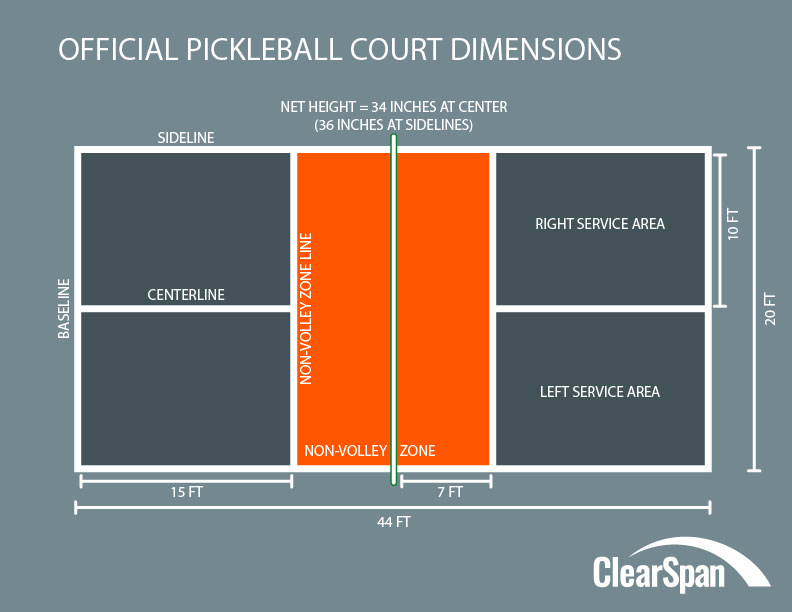Trick Factors in the Building And Construction of Pickleball Judiciaries: From Site Selection to Final Finishes
The building of pickleball courts incorporates a variety of essential factors, starting with the option of an ideal site that stabilizes availability with ecological considerations. Crucial components such as court dimensions, surface area materials, and drain systems significantly affect not just the quality of play but also the long life of the center.
Website Selection Requirements
When embarking on the construction of pickleball courts, it is necessary to pin down the site selection criteria that will guarantee optimum playability and ease of access. The area must be quickly reachable for gamers, preferably located near houses or neighborhood facilities, to motivate engagement.
Furthermore, the terrain ought to be degree and stable, as irregular ground can bring about security threats and impact gameplay. Adequate drain is likewise vital; choosing a site with excellent water overflow will assist preserve court problems throughout negative climate.
Another important consideration is the accessibility of energies. Accessibility to power and water is required for illumination and upkeep functions. Furthermore, closeness to auto parking facilities is vital, helping with simple gain access to for gamers and viewers alike.
Environmental variables can not be overlooked; natural color from trees can improve player convenience, while exposure to dominating winds may interrupt play. Zoning laws and area assistance need to be taken into consideration to guarantee that the task straightens with neighborhood standards and receives the backing it needs for effective execution. By carefully assessing these criteria, stakeholders can develop an inviting and practical environment for pickleball fanatics.
Court Dimensions and Format
To make certain optimal gameplay and adherence to laws, the dimensions and format of pickleball courts need to be meticulously specified. A common pickleball court gauges 20 feet in size and 44 feet in size for both songs and increases play. The recommended design includes a non-volley area, generally referred to as the "cooking area," expanding 7 feet from the net on either side. This location is vital, as it affects player positioning and shot choice - Illinois and midwest.
The web elevation is evaluated 36 inches at the sidelines and 34 inches at the facility, creating a minor dip that influences sphere trajectory. Court markings are similarly vital; lines need to be 2 inches large and distinctive in color to make certain exposure.
Furthermore, a buffer zone bordering the court is recommended, generally prolonging 5 to 10 feet past the sidelines and standards to suit players' activities and improve security. Appropriate format and dimensions not just make certain conformity with main guidelines but likewise improve the total having fun experience, suiting both Visit Website entertainment and competitive play. Cautious planning in these areas is paramount to the effective building and construction of pickleball courts.
Surface Area Material Options
Choosing the ideal surface area material for pickleball courts is important for making certain optimum gamer efficiency and safety. The choice of surface can dramatically influence gameplay, including round bounce, grip, and gamer comfort.
There are several click here for more alternatives offered, each with its distinct characteristics. Asphalt is a prominent selection due to its toughness and low maintenance requirements. It provides a solid playing surface area that can withstand different weather conditions however may require regular resurfacing.
Concrete is another extensively used product, using exceptional longevity and a smooth finish. It enables for constant round bounce but can be tough on gamers' joints, making it less desirable for long-term play without proper cushioning.
For those looking for boosted convenience and shock absorption, supported acrylic surfaces provide a feasible alternative. These surface areas integrate a base layer with an acrylic overcoat, giving enhanced traction and a softer feel, which is beneficial for decreasing the threat of injuries.
Finally, artificial grass is acquiring traction, especially for multi-purpose facilities. Its adaptability and reduced upkeep requires make it an appealing choice, though it might not offer the same ball response as traditional tough courts. Cautious consideration of these choices will ensure an ideal playing environment.
Drain and Lighting Considerations
Proper drain and efficient illumination are important components in the building of pickleball courts, substantially influencing both playability and safety and security. Adequate drainage systems avoid water accumulation, which can lead to unsafe surfaces and damage to the court framework.
Lighting is just as critical, specifically for courts meant for night usage. Correct lighting boosts visibility, making sure that players can see the click here for more round plainly and lowering the danger of crashes. The placement of lighting fixtures should be purposefully prepared to get rid of shadows and provide even distribution of light across the court. LED lights are suggested for their energy performance and long life, using brilliant illumination while decreasing operational costs.

Final Surfaces and Upkeep
After addressing water drainage and lighting factors to consider, interest transforms to the final surfaces and recurring maintenance of pickleball courts. Common alternatives consist of acrylic coatings and specialized sporting activities surfaces that offer optimum traction and cushioning.

Seasonal upkeep might consist of resurfacing every couple of years, depending upon use and ecological aspects. Effectively keeping internet, court lines, and bordering locations is equally essential to offer a secure and satisfying having fun experience. By investing in quality coatings and adhering to a structured upkeep timetable, facility proprietors can guarantee their pickleball courts continue to be in exceptional problem for many years to find.
Conclusion
In final thought, the effective construction of pickleball courts hinges on meticulous attention to a number of vital factors. Top quality surfaces and a robust maintenance schedule are essential for maintaining the court's problem, enhancing the overall experience for players and spectators alike.